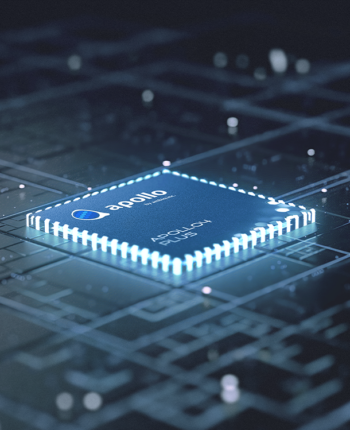
SWO interfaces are not typically employed by generation applications, so power-optimizing SWO is mainly so that any power measurements taken all through development are nearer to These on the deployed system.
It will likely be characterized by diminished issues, better decisions, as well as a lesser period of time for searching information.
By figuring out and eliminating contaminants just before assortment, facilities save vendor contamination service fees. They might make improvements to signage and coach staff members and people to scale back the amount of plastic bags in the system.
Knowledge preparation scripts which assist you to obtain the information you may need, put it into the proper condition, and complete any function extraction or other pre-processing desired ahead of it's utilized to prepare the model.
Concretely, a generative model In this instance may be just one substantial neural network that outputs visuals and we refer to those as “samples from the model”.
To manage several applications, IoT endpoints need a microcontroller-based processing unit which might be programmed to execute a desired computational functionality, including temperature or humidity sensing.
Prompt: Photorealistic closeup online video of two pirate ships battling one another because they sail inside a cup of coffee.
Prompt: This shut-up shot of the chameleon showcases its placing colour altering abilities. The history is blurred, drawing interest towards the animal’s putting appearance.
SleepKit exposes various open up-source datasets by way of the dataset manufacturing facility. Each individual dataset features a corresponding Python class to assist in downloading and extracting the information.
The crab is brown and spiny, with extensive legs and antennae. The scene is captured from a wide angle, exhibiting the vastness and depth of the ocean. The drinking water is evident and blue, with rays of sunlight filtering by means of. The shot is sharp and crisp, which has a higher dynamic array. The octopus and the crab are in target, when the background is marginally blurred, developing a depth of area influence.
Ambiq creates products to enable smart products everywhere by creating the lowest-power semiconductor alternatives to travel an energy-effective, sustainable, and info-driven entire world. Ambiq has served main manufacturers throughout the world develop products that previous months on one demand (rather then times) though offering maximum feature sets in compact customer and industrial styles.
This is analogous to plugging the pixels from the impression into a char-rnn, even so the RNNs operate each horizontally and vertically about the image in place of just a 1D sequence of figures.
This ingredient plays a important function in enabling artificial intelligence to mimic human believed and carry out responsibilities like impression recognition, language translation, and info Assessment.
This great quantity of information is in existence also to a substantial extent simply accessible—either during the Actual physical entire world of atoms or Deploying edgeimpulse models using neuralspot nests even the electronic earth of bits. The one difficult part should be to produce models and algorithms that will analyze and understand this treasure trove of facts.
Accelerating the Development of Optimized AI Features with Ambiq’s neuralSPOT
Ambiq’s neuralSPOT® is an open-source AI developer-focused SDK designed for our latest Apollo4 Plus system-on-chip (SoC) family. neuralSPOT provides an on-ramp to the rapid development of AI features for our customers’ AI applications and products. Included with neuralSPOT are Ambiq-optimized libraries, tools, and examples to help jumpstart AI-focused applications.
UNDERSTANDING NEURALSPOT VIA THE BASIC TENSORFLOW EXAMPLE
Often, the best way to ramp up on a new software library is through a comprehensive example – this is why neuralSPOt includes basic_tf_stub, an illustrative example that leverages many of neuralSPOT’s features.
In this article, we walk through the example block-by-block, using it as a guide to building AI features using neuralSPOT.
Ambiq's Vice President of Artificial Intelligence, Carlos Morales, went on CNBC Street Signs Asia to discuss the power consumption of AI and trends in endpoint devices.
Since 2010, Ambiq has been a leader in ultra-low power semiconductors that enable endpoint devices with more data-driven and AI-capable features while dropping the energy requirements up to 10X lower. They do this with the patented Subthreshold Power Optimized Technology (SPOT ®) platform.
Computer inferencing is complex, and for endpoint AI to become practical, these devices have to drop from megawatts of power to microwatts. This is where Ambiq has the power to change industries such as healthcare, agriculture, and Industrial IoT.
Ambiq Designs Low-Power for Next Gen Endpoint Devices
Ambiq’s VP of Architecture and Product Planning, Dan Cermak, joins the ipXchange team at CES to discuss how manufacturers can improve their products with ultra-low power. As technology becomes more sophisticated, energy consumption continues to grow. Here Dan outlines how Ambiq stays ahead of the curve by planning for energy requirements 5 years in advance.
Ambiq’s VP of Architecture and Product Planning at Embedded World 2024
Ambiq specializes in ultra-low-power SoC's designed to make intelligent battery-powered endpoint solutions a reality. These days, just about every endpoint device incorporates AI features, including anomaly detection, speech-driven user interfaces, audio event detection and classification, and health monitoring.
Ambiq's ultra low power, high-performance platforms are ideal for implementing this class of AI features, and we at Ambiq are dedicated to making implementation as easy as possible by offering open-source developer-centric toolkits, software libraries, and reference models to accelerate AI feature development.

NEURALSPOT - BECAUSE AI IS HARD ENOUGH
neuralSPOT is an AI developer-focused SDK in the true sense of the word: it includes everything you need to get your AI model onto Ambiq’s platform. You’ll find libraries for talking to sensors, managing SoC peripherals, and controlling power and memory configurations, along with tools for easily debugging your model from your laptop or PC, and examples that tie it all together.
Facebook | Linkedin | Twitter | YouTube